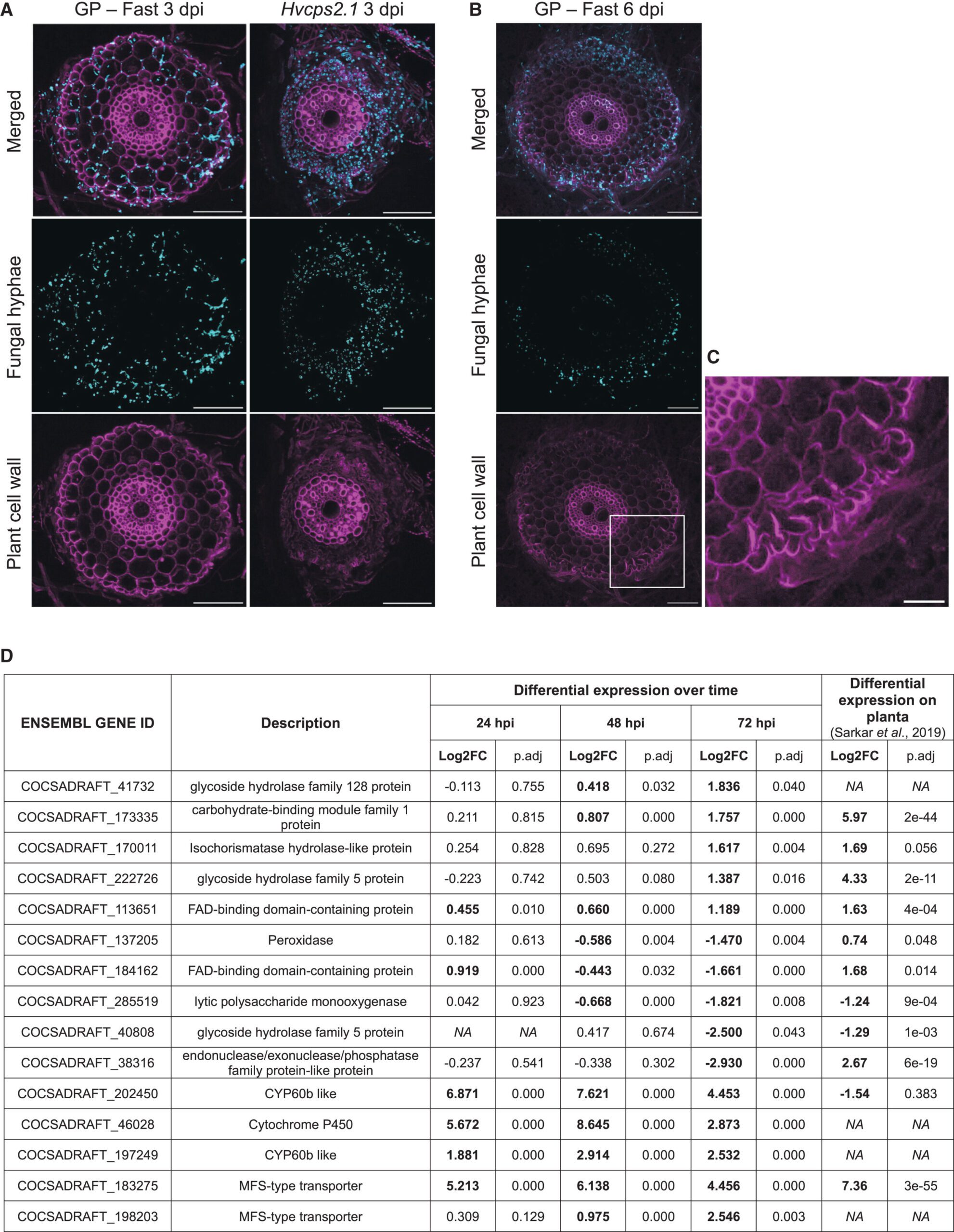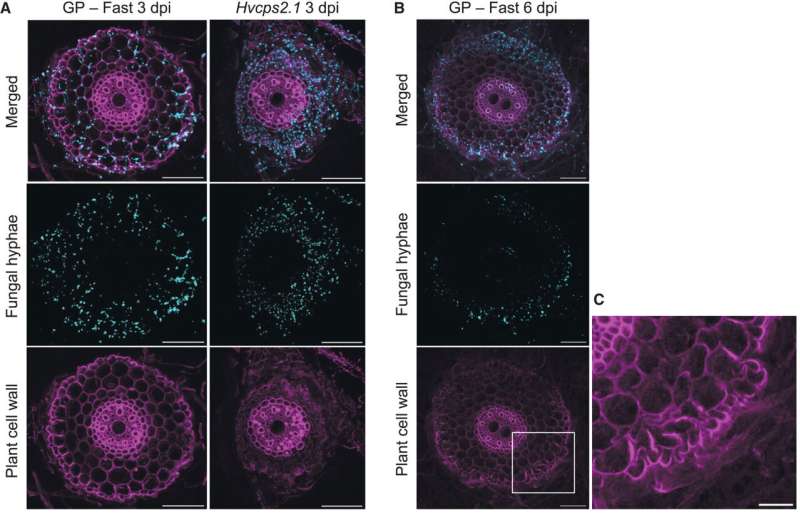

Scientists from the Leibniz Institute of Plant Biochemistry (IPB), together with partners from the University of Cologne, have discovered a new group of defense substances in barley that are effective against a broad spectrum of fungal pathogens. One exception is the root rot pathogen Bipolaris sorokiniana. This fungus neutralizes the defense substances and uses them to grow better.
The results of the study were recently published in Molecular Plant. The researchers impressively show how a pathogen not only bypasses the plant’s immune system, but even successfully exploits it to its own advantage.
Fungal pathogens cause major yield losses in various crops such as barley, maize and wheat, especially in warmer regions. Due to the warming of the northern hemisphere, they also pose an increasing threat in our latitudes.
However, the infested plants are not defenseless against the pathogen attack. Once the microorganisms have entered the root tissue, the plant produces a range of different defense substances, which are termed phytoalexins. Each plant species has its own arsenal of phytoalexins. The defense compounds are structurally very diverse and therefore use different mechanisms of action to keep pathogens at bay.
IPB scientists have now detected a number of new phytoalexins in the roots of barley plants after infecting them with various fungal pathogens. The defense metabolites found belong to the substance class of diterpenoids.
Derived from the Latin name of barley (Hordeum vulgare), they were given the name hordedanes. A total of 17 different hordedanes were detected in the roots of infected barley. The metabolic pathway within the plant that leads to the production of these hordedane compounds was also successfully elucidated by the scientists.
Hordedanes act as a broad-spectrum antifungal agent. Above all, they inhibit spore germination and the growth of some harmful and also beneficial fungal species. Surprisingly, however, an exception was found: the growth of the fungus Bipolaris sorokiniana was not only unimpressed by the hordedanes, it even grew better in the presence of these phytoalexins, which were originally produced to repel it.
This was discovered using barley mutants with weakened defenses that were no longer able to produce hordedanes. Bipolaris sorokiniana grew more slowly in these mutants than in the wild-type plants.
The exact mechanism of this fungal counter-offensive is not yet known. However, further investigations with the most prominent hordedane compound 19-β-hydroxy-hordetrienoic acid (19-OH-HTA) showed that Bipolaris sorokiniana is able to oxidize 19-OH-HTA and bind it to fungal metabolites. This apparently neutralizes the effect of the phytoalexin.
At the same time, the fungus modifies its parasitic form of existence. Bipolaris sorokiniana initially feeds on living plant cells, which it then destroys. The pathogen grows very quickly in living cells, while in dead plant tissue, it forms more spores to infect new host plants.
By converting the plant hordedanes into fungal structures, the pathogen can activate a molecular signaling chain that allows it to keep its plant host cell alive for longer rather than killing it immediately. This facilitates a longer and more successful growth phase, the scientists assume. The fungus breaks off the tip of the plant’s spear and uses it for its own growth.
The study clearly illustrates that the interactions between pathogens and their plant hosts are very complex and are still poorly understood. In this interaction, pathogens act as driving forces of evolution. They force the host to constantly develop new adaptive reactions, which in turn are thwarted by the pathogens, overridden or turned to their own advantage. Through these mutual counterattacks, all organisms involved are constantly evolving.
More information:
Yaming Liu et al, Hordedane diterpenoid phytoalexins restrict Fusarium graminearum infection but enhance Bipolaris sorokiniana colonization of barley roots, Molecular Plant (2024). DOI: 10.1016/j.molp.2024.07.006
Provided by
Institut für Pflanzenbiochemie
Citation:
Scientists shed light on an arms race between barley and a fungal pathogen (2024, November 5)
retrieved 5 November 2024
from https://phys.org/news/2024-11-scientists-arms-barley-fungal-pathogen.html
This document is subject to copyright. Apart from any fair dealing for the purpose of private study or research, no
part may be reproduced without the written permission. The content is provided for information purposes only.